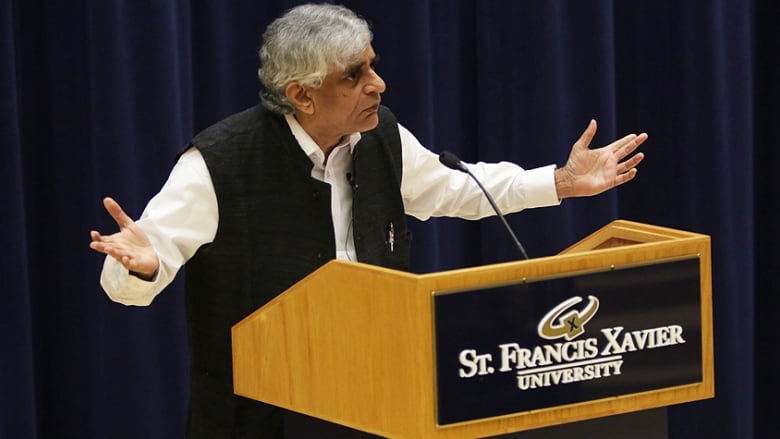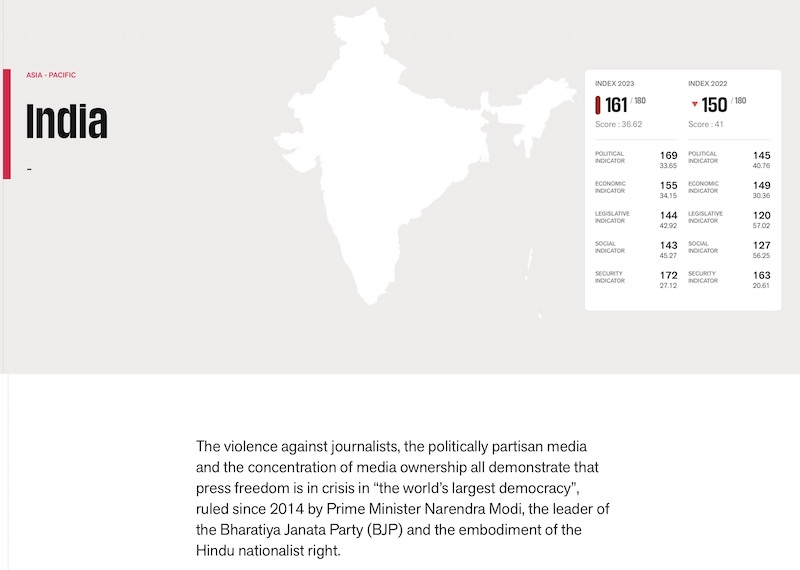Note: for official figures include “scheduled tribe ST” along with a union state or region, e.g. “Chhattisgarh ST community”, “Scheduled tribe Tamil Nadu census”, “ST Kerala census”, “Particularly Vulnerable Tribal Group Jharkhand”, “PVTG Rajasthan”, “Adivasi ST Kerala”, “Adibasi ST West Bengal” etc.
List of Indian periodicals and sites covered by the present Custom search engine
www.timesofindia.indiatimes.com
Suggest another Indian periodical for inclusion here >>
Note: hyperlinks and quotes are meant for fact-checking and information purposes only | Disclaimer >>

Saint Francis Xavier University’s Coady Chair in Social Justice for 2015 >>
Touring ten drought-stricken states in India transformed the acclaimed journalist Palagummi Sainath – showing him a devastating situation mostly ignored by his fellow journalists. “I felt that if the Indian Press was covering the top 5 percent, I should cover the bottom percent.” He also believes the media around the world is, for the most part, imprisoned by profiteering and political constraints. A conversation with Saint Francis Xavier University’s Coady Chair in Social Justice for 2015, along with excerpts from Palagummi Sainath’s lecture, Media and Democracy. **This episode originally aired May 27, 2016.
Source: Imprisoned by Profit: Media & Democracy
URL: https://www.cbc.ca/radio/ideas/imprisoned-by-profit-media-democracy-1.3601228
Date visited: 26 March 2020

Reporters Without Borders https://rsf.org/en/india, by searching
Indian periodicals, and by viewing posts on media portrayal >>
Originally a product of the anti-colonial movement, the Indian press used to be seen as fairly progressive but things changed radically in the mid-2010s […] Indian journalists who are too critical of the government are subjected to all-out harassment and attack campaigns by Modi devotees known as bhakts. […]
Indian law is protective in theory but charges of defamation, sedition, contempt of court and endangering national security are increasingly used against journalists critical of the government, who are branded as “anti-national.” […]
With an average of three or four journalists killed in connection with their work every year, India is one of the world’s most dangerous countries for the media. Journalists are exposed to all kinds of physical violence including police violence, ambushes by political activists, and deadly reprisals by criminal groups or corrupt local officials. […]
“India Index” (2021 & 2022) by Reporters Without Borders (RSF)
URL: https://rsf.org/en/country/india
Poor implementation of existing schemes in the tribal regions has meant that not only poverty continues at an exceptionally high levels in these regions, but the decline in poverty has been much slower here than in the entire country, as shown in this table (for the years 1993-94, 1999-2000 and 2004-05).
Source : “Rural Population Living Below Poverty Line (In Percent), Planning Commission, Twelfth Five Year Plan Document” by Dr. Ashok A. Sonkusare, Joint Adviser (S&T), NITI Aayog/Planning Commission
URL: https://data.gov.in/resources/rural-population-living-below-poverty-line-percent
Date visited: 16 April 2020
Learn more
Accountability | Constitution and Supreme Court | Democracy
Adivasi (Adibasi) | Scheduled Tribes (ST) | Classifications in different states | Tribal Research Institutes
Adverse inclusion | Casteism | Imprisonment | Social conventions
Ambedkar | He who does not lead his life under the direction of others … is a free man
Anthropology | Anthropological Survey of India (AnSI)
Biodiversity | Hyderabad biodiversity pledge
Childhood | Childrens rights: UNICEF India | Safe search
Climate change | United Nations on climate change
Colonial policies | Denotified Tribe vs. “criminal tribe“
eBook | Background guide for education
eBook | Demographic Status of Scheduled Tribe Population of India (Census figures 2011)
Ekalavya and Drona shape collective expectations from a teacher and a student
Fact checking | Figures, census and other statistics
Health and nutrition | Recommendations by the Expert Committee
How many ‘Scheduled Tribes’ are there in India? | Latest list (ST): tribal.nic.in (Govt. of India)
Human Rights Commission (posts) | www.nhrc.nic.in (Government of India)
National Commission for Scheduled Tribes
News update in Indian periodicals: Tribal Affairs
Nomadic and Semi-Nomadic Tribes | SEED – Government scheme